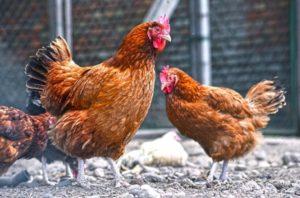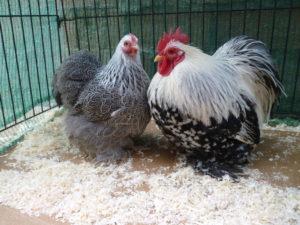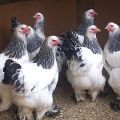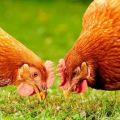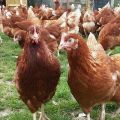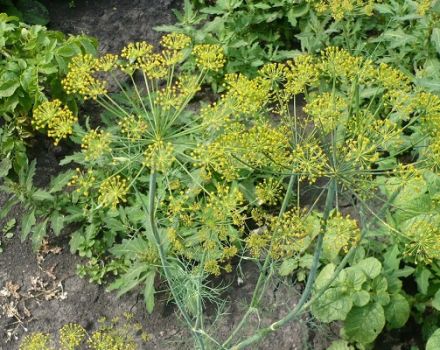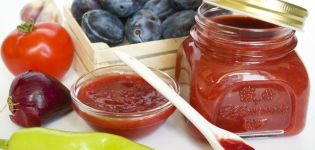Description and characteristics of the breed of chickens Araucana, breeding features
The South American breed of domesticated chickens, the Araucana, is known for the fact that its representatives have a bright interesting color, and layers give large eggs with a blue or turquoise shell. The breed is decorative, but with proper care it acquires a high practical value. What else is interesting, and why is Araucana popular? Let's try to figure it out.
Breeding benefits
The Araucana breed of chickens has many advantages, which makes breeding it quite profitable and interesting. Poultry breeders (amateurs and professionals) are increasingly opting for it, since birds have a lot of positive breed qualities:
- tasty, moderately fatty meat;
- large eggs of pale blue or green;
- high productivity, which is determined by early puberty;
- vitality and unpretentiousness;
- the ability to adapt to adverse conditions.
The origin of the breed
Araucana is an ancient Chilean chicken breed. For the first time it began to be bred by the Indians of the Araucan tribe, living in small settlements located in the foothills of the Andes. The natives were very interested in chickens laying colored eggs and warlike tailless cockerels, as if specially created to participate in cockfights.
This breed was unknown to anyone for a long time. For the first time they started talking about it at the World Scientific Association of Poultry Breeders, held in The Hague in 1920. Since that time, the breed gained popularity, began to actively breed and was included in the international standard.
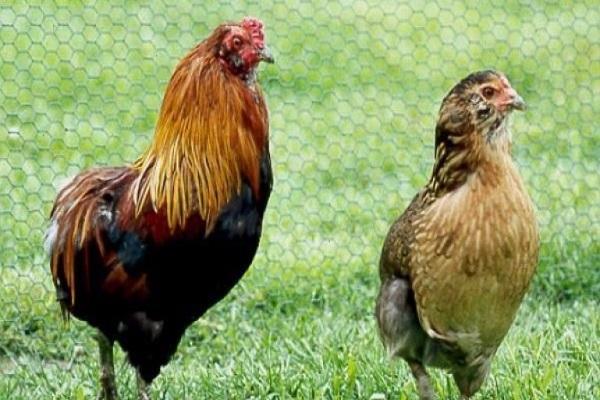
Description and characteristics of chickens Araucan
The main feature of chickens and cocks of the Araucana breed is the complete absence of a tail, although English and Australian standards allow for a small tail. Turquoise eggs are another important property of the breed. Each of them weighs up to 60 grams. For the unusual shade of the shell, the green bile pigment is responsible - biliverdin, produced by the body of the females and falling into the shell at the stage of its formation.
The breed standard also includes special head plumage. Three combinations are allowed: beard and tanks, tassels or tassels and beard. The breed standard also allows 12 varieties of body colors:
- wild;
- golden mane;
- black and red;
- wild blue;
- blue golden mane;
- blue wheat;
- wheat;
- silver-maned;
- the black;
- blue;
- blue bordered;
- cuckoo.

The hens themselves are small birds weighing from 1.6 kilograms (females) to 2.5 kilograms (males).
What do they look like?
The unusual appearance of chickens of this breed gave rise to several theories. According to one of them, modern Araucan chickens are a cross between common chickens and wild pheasants. There is no scientific evidence for this assumption.
In addition to the tailless, short body and small head, decorated with bright plumage, the representatives of the breed can be distinguished:
- slightly convex chest;
- wings tight to the body;
- powerful belly;
- four-toed paws of a blue-green hue,
- eyes with an orange tint;
- small standing comb;
- beak bent downwards;
- dense plumage.
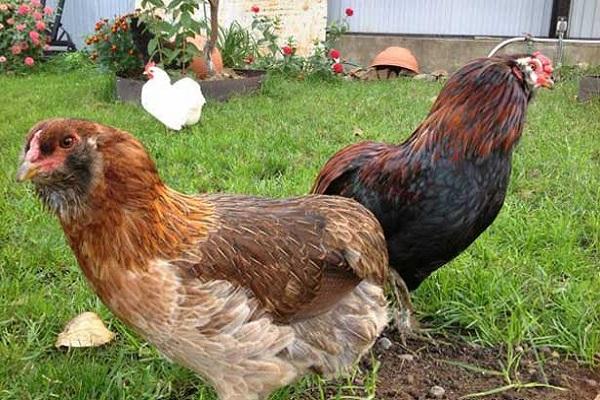
Breed productivity
Chickens of the Araucana breed are bred mainly for the sake of large eggs of the original color. The breed is egg-laying - each hen produces from 160 to 180 eggs per year.
The main part of females begins to rush by 6 months. A little later, individuals of the late brood - autumn or winter - rush. The bird is capable of producing eggs all year round, except during moulting periods.
Breeders are actively crossing Araucan chickens with other breeds. It turns out unpretentious viable offspring with good breed qualities. Especially good results were brought by the work on crossing these birds with chickens of the Russian Crested breed.
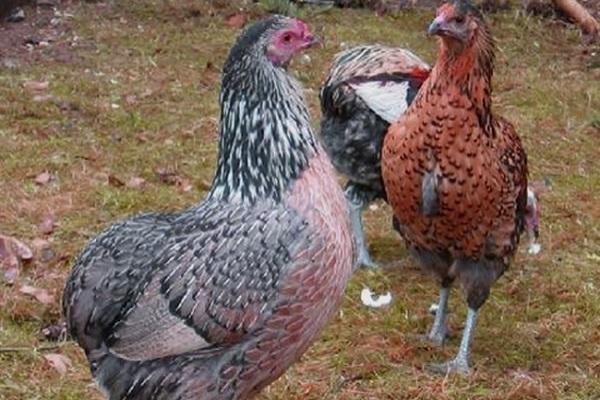
Araucana meat is also appreciated - it is excellent both in taste and in nutrient content. But it is useless to specially feed the birds for meat. Overeating will turn out for them not an increase in muscle mass, but obesity.
The nature of the birds
Roosters of the Araucanian breed are known for their cocky disposition and, defending their territory, they can attack both strangers and their own. Cases of demonstration of aggression even in relation to their own owner are known.
Chickens are peaceful, but they have another drawback. Most females lack the hatching instinct. Therefore, it is possible to obtain thoroughbred chickens from eggs only by incubation.

Main pros and cons
The popularity of Araucan chickens is increasing from year to year. Growing them is quite profitable and has many advantages. The most appreciated are good egg production, unpretentiousness, high immunity, immunity to diseases and original appearance. But when deciding to buy chickens, it should be borne in mind that there are certain difficulties in breeding:
- The high price of birds.
- Lack of the instinct of hatching eggs in females.
- Low meat productivity.
- It is difficult to acquire purebred individuals of the Araucana breed, since it is small in number. Due to inexperience, you can purchase a mongrel chicken or a cross.
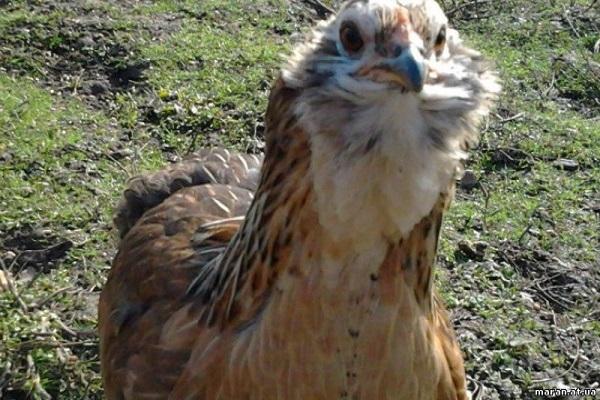
The nuances of keeping in a private household
This rare breed requires separate maintenance. Coexistence with chickens of other breeds leads to mixing of genes and gradual degeneration of the breed. It is recommended to keep chickens in small families, in special cages or aviaries.
Room arrangement
The room for keeping chickens of the Araucana breed is equipped in a classic style - in the same way as for birds of any other breed. Acceptable conditions of detention - in cages, aviaries or free-range. The area of the room should be calculated so that no more than 4 chickens are placed on 1 square meter.
It is preferable to keep in aviaries. This will avoid fighting between males. The room is divided by gratings into aviaries, each of which accommodates 1 rooster and no more than 8 chickens.
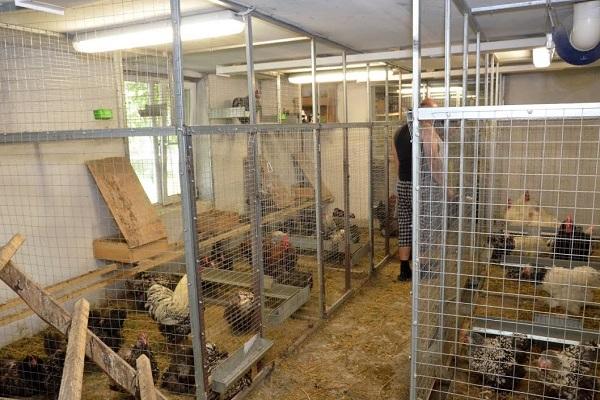
You need to take care of a sufficient number of perches and nests. There should be a litter of dry hay, sawdust or sand on the wooden, earthen or concrete floor.
The optimum temperature for mating birds and breeding offspring is from 17 to 20 degrees Celsius.On long winter evenings, a source of artificial lighting will be needed, and a ventilation unit should be provided for the hot season.
Preparing a walking yard
If the birds will live indoors, then it is necessary to organize a walking yard. This space is surrounded by a metal fence with a height of at least 1.5 meters. The leeward side is covered with plywood shields. They build a canopy for the summer - protection from sunlight and rain. There should be a sufficient number of feeders, drinking bowls, a container with chalk and gravel, and an ash bath in the walking yard.

Installation of feeders, drinkers and ash baths
Feeders should be installed on a hill to avoid the formation of puddles. Between feedings, containers should be cleaned and uneaten food removed. Spoiled food can cause significant health damage.
Birds should always have fresh, clean water freely available. This is especially important in the summer heat.
Ash baths are necessary for the birds to clean their plumage. Deep containers are filled with a mixture of ash and sand. Having bathed in this mixture, the bird reliably protects its feathers from the penetration of skin and feather parasites.
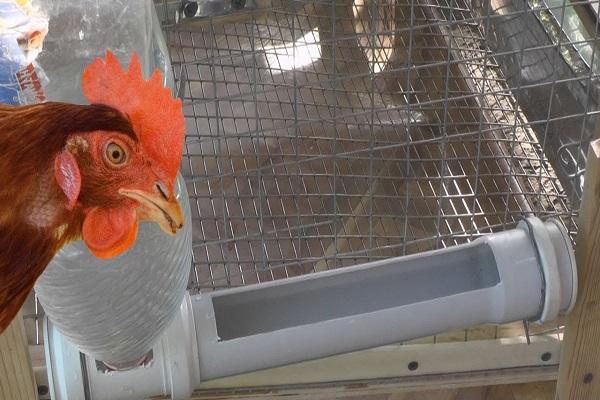
Seasonal molt and lay break
Every year at the end of August, chickens begin molting season. This period is quite difficult for birds and is accompanied by a break in egg production. But with good care, proper feeding, a vitamin diet, the egg production of birds will decrease slightly or not at all.
Planned herd replacement
Egg production in chickens of the Araucana breed lasts 10 years. The most active period lasts two years, then the number of eggs delivered is significantly reduced.
Those females that have stopped rushing should be replaced with new ones. It is quite difficult to buy purebred Araucan chickens, so it is recommended to raise young egg-laying chickens on your own. This process is accompanied by certain problems, but all of them can be solved:
- To increase the percentage of fertility, every 20 days, it is necessary to trim the thick feathers around the cloaca to the hen and rooster.
- Most Araucanian chickens lack the hatching instinct. In order to obtain chickens, eggs are placed in a home incubator or placed in the nests of chickens of other breeds for incubation.
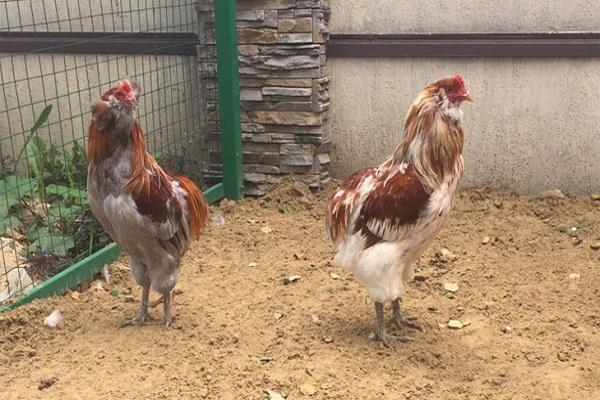
Diet
Overeating is the main consequence of an incorrectly composed menu. A large amount of food quickly leads to obesity in the bird, and therefore, a decrease in egg production. The diet for chickens of the Araucana breed is compiled according to the classical scheme. Its main principles are as follows:
- Adequate amount of protein foods. Sources of protein - earthworms, fish waste, legumes, bone meal.
- Adequate amount of carbohydrates. Carbohydrate foods - grains, potatoes, pumpkin.
- Fats. Good egg production depends on their number. Vegetable fat suppliers are corn and oat grains.
- Food rich in vitamins. Vitamins necessary for birds - groups A, B, D, are contained in silage, yeast, bone meal.
- Adequate minerals, especially calcium. This mineral is essential for the formation of a strong shell. Ash, shells, crushed shells are rich in trace elements.
The diet should be carefully adjusted so that the amount of a product does not exceed the maximum permissible daily dose..

Adult chickens
Adult birds should eat at least three times a day. Dry grain is provided in the morning and evening, and a cereal-based liquid formula is prepared at lunchtime. The daily allowance for one adult chicken should be about 150 grams of feed.
In the summer, the birds get vitamins and minerals from the grass. In the cold season, a vitamin supplement is prepared based on chopped pine needles.Young chickens are given compound feed with a high protein content for active growth, and sources of calcium (chalk, crushed eggshells).
Chicks
Chickens of the Araucana breed are fed according to the classical scheme. The first week is given by chopped boiled eggs, millet porridge, cottage cheese and herbs. At the age of one week, greens are connected - nettles, dandelions, clover. It is allowed to give nutritious compound feed for chickens. A prerequisite for proper feeding is sufficient fresh drinking water.
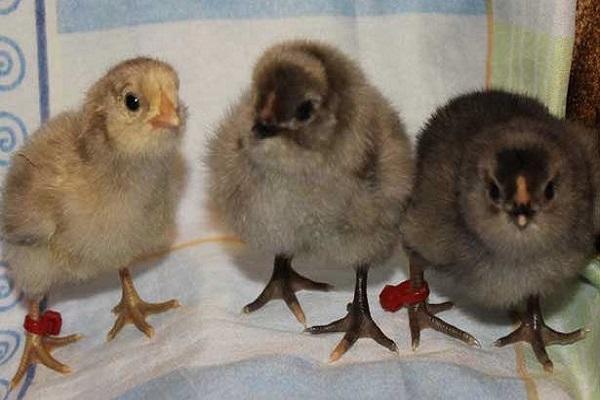
Breeding features
Chickens of the Araucana breed have some features that cannot be ignored when breeding the breed.
- the presence of a semi-lethal gene;
- congenital taillessness.
If you do not pay attention to them, then you will not be able to breed a sufficient number of viable purebred chickens.
Semi-lethal gene
The semi-lethal gene is responsible for the shape of the tufts on the bird's head. These are tanks, beard and tassels. The gene is called semi-lethal because, if both parents have it, non-viable offspring may appear. This happens with the wrong family. To avoid the risk of losing offspring, it is recommended to mate birds as follows: one of them should have tassels on the head, and the other - a beard.
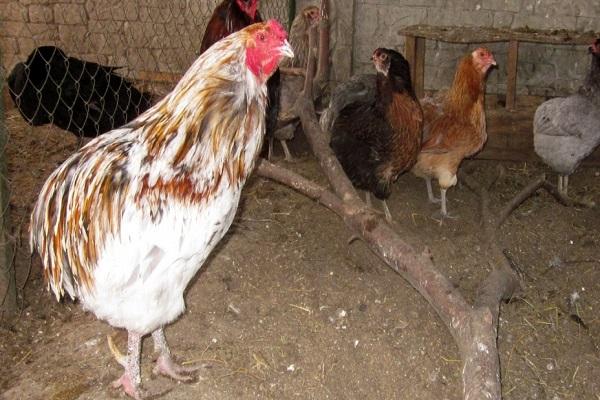
Congenital taillessness
The birds of this breed lack the lower vertebrae that make up the tailbone. The absence of a tail led to the development of thick plumage at the rear of the body. This hinders the mating process, which is a big problem. Under normal conditions, its percentage is no more than 60.
It can be significantly increased by the procedure of cutting five to six centimeters of long fluff around the cloaca of the chicken and rooster. This increases the chance of fertility up to 90-100%.
Possible diseases
Thoroughbred chickens have strong innate immunity and are not susceptible to disease. Improper care and lack of prevention can provoke infection and infection with helminths.

The most common parasitic infections are:
- Feather mite. The disease is incurable, infected birds are doomed.
- Pooh lice. Sick birds are treated with insecticides. In humans, this parasite can cause an allergic reaction.
- Helminthiasis. The disease is transmitted from wild birds entering the chicken coop.
- Fleas. Infected animals experience severe itching, become restless, and lose their appetite.
An obligatory preventive measure that protects chickens of the Araucana breed from the penetration of all types of parasites is the regular treatment of the chicken coop with special complex preparations.
